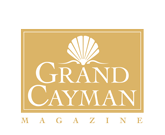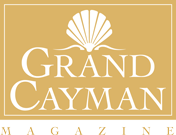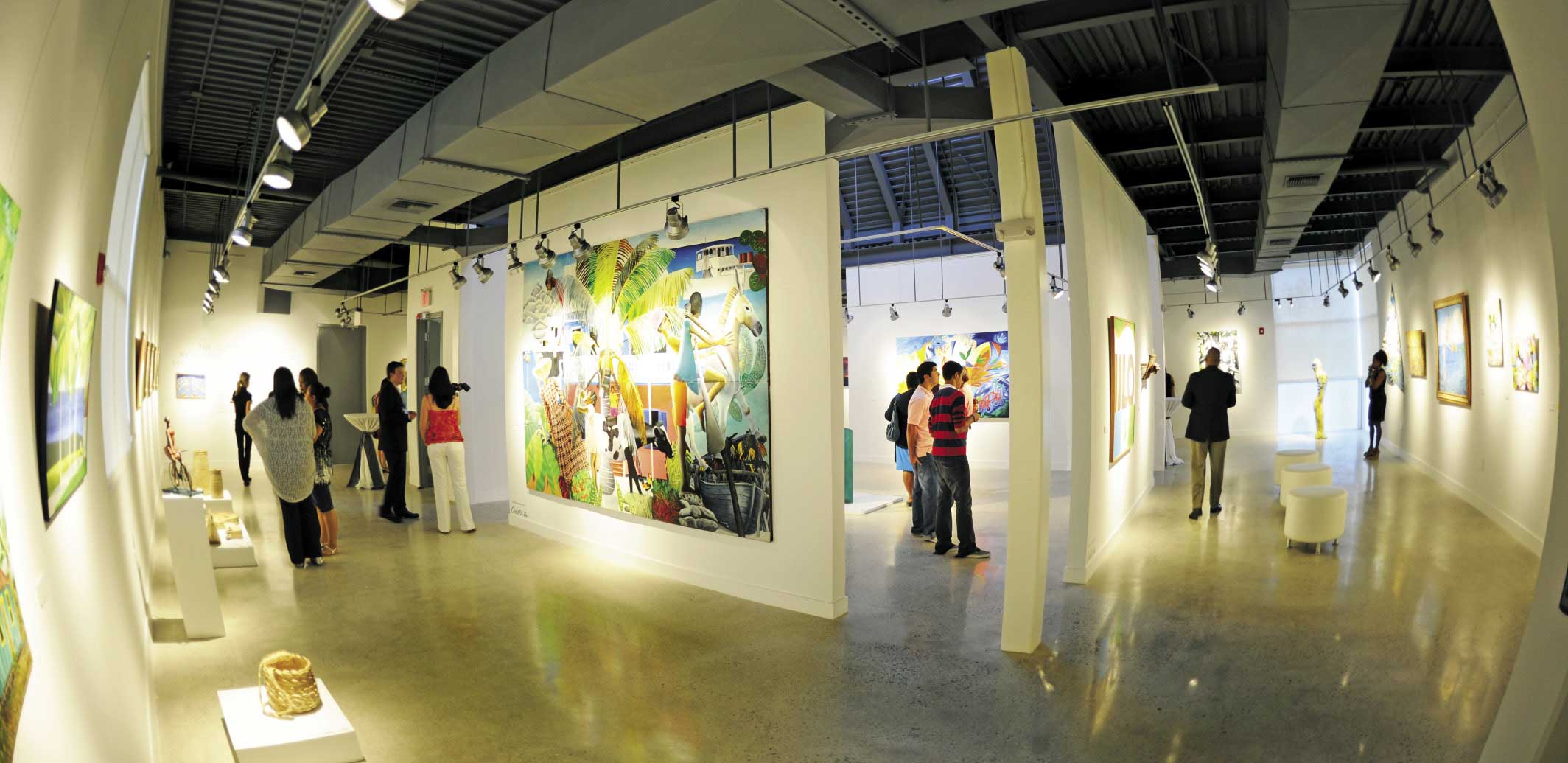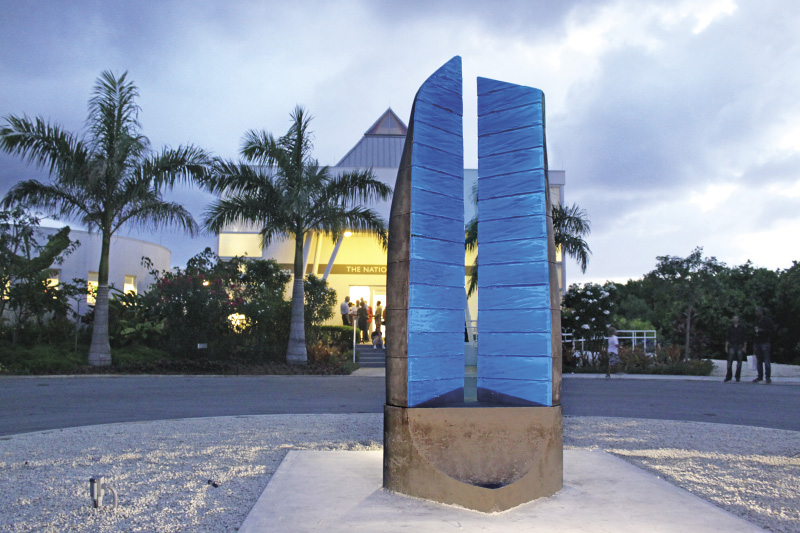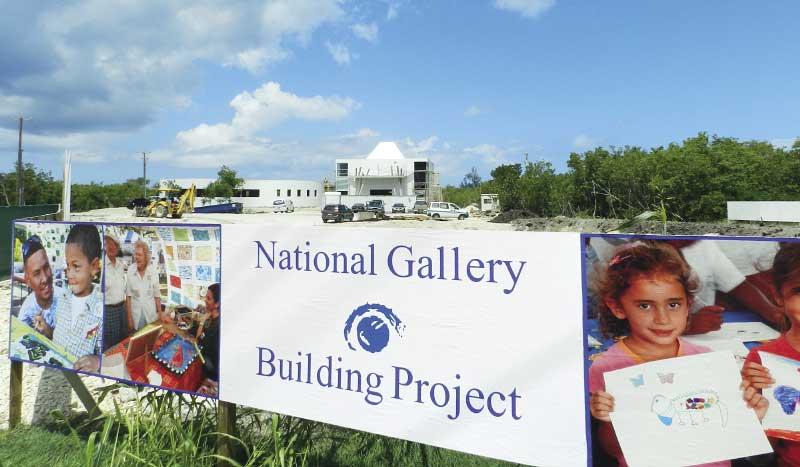What began as a small grassroots organization in 1997 has blossomed into one of the island’s cultural cornerstones.
Marking its 20th anniversary this year, the National Gallery of the Cayman Islands has been a community effort from the start – a nod to the unifying qualities of the arts.
It all began when the minds of Leslie Bigelman and Carol Owen intersected in 1995.
Michael Gore was ending his term as governor of the Cayman Islands when his wife Monica made a memorable statement. She picked a seed from a tree in the garden of Government House and handed it to McKeeva Bush, then minister responsible for culture, with the words, “This seed represents the beginning of a National Gallery for the Cayman Islands. Please, will you make sure it grows?”
It was fortuitous that incoming Governor John Owen’s wife Carol was an artist as was the gallery’s first director, Leslie Bigelman, who Carol remembers as having “superhuman energy.”
Bigelman had been part of Cayman’s growing fine arts community for some time. She was a board member of both the Cayman National Cultural Foundation and the Visual Arts Society.
“In my thoughts, one of the most major steps in the growth of the visual arts in the Cayman Islands, and the prelude to the National Gallery forming, was the UNESCO-initiated exhibition “Carib Art”,” Bigelman said in a 2007 National Gallery 10-year anniversary supplement in the Cayman Compass. “Prior to this, there had been many great initiatives by the Visual Arts Society and CNCF, but this exhibition really sparked interest in the visual arts in its own right.”
The seed that the Gores had planted was nurtured by the pair and, with the combination of Owen’s own experience as an artist and Bigelman’s network of artists living in Cayman, the concept took shape quickly.
 From an initial task force that was created in 1996, the first formal gallery board was established and included Owen as founding chairperson, Martyn Bould, John Doak, Anita Ebanks, Miguel Powery and Bendel Hydes. In 1997, the gallery was officially recognized as a Statutory Authority by the Cayman Islands Government.
From an initial task force that was created in 1996, the first formal gallery board was established and included Owen as founding chairperson, Martyn Bould, John Doak, Anita Ebanks, Miguel Powery and Bendel Hydes. In 1997, the gallery was officially recognized as a Statutory Authority by the Cayman Islands Government.
The first fundraiser
The pair lost no time in launching fundraising initiatives to get the project off the ground. With help from the growing population of collectors and influencers, they co-hosted a black-tie auction at the classic Cayman hotel property, the Hyatt Regency on Seven Mile Beach. The evening was in celebration of the 10th anniversary of the Hyatt and Britannia Resort.
Owen donated 11 of her oil paintings. The auction turned out to be the highlight of the gathering, a gala that many remember as one of the most elegant evenings held on-island. Under the masterful gavel of Kent Eldemire, the auction of the paintings raised more than CI$150,000 for the gallery.
“Perhaps the most important aspect of the National Gallery and Art Institute is that it will serve everyone,” Owen wrote in the Britannia anniversary program. “Thus it will truly serve Cayman. I am most grateful to the Hyatt Regency Hotel for giving me this opportunity to begin fundraising for this important project.”
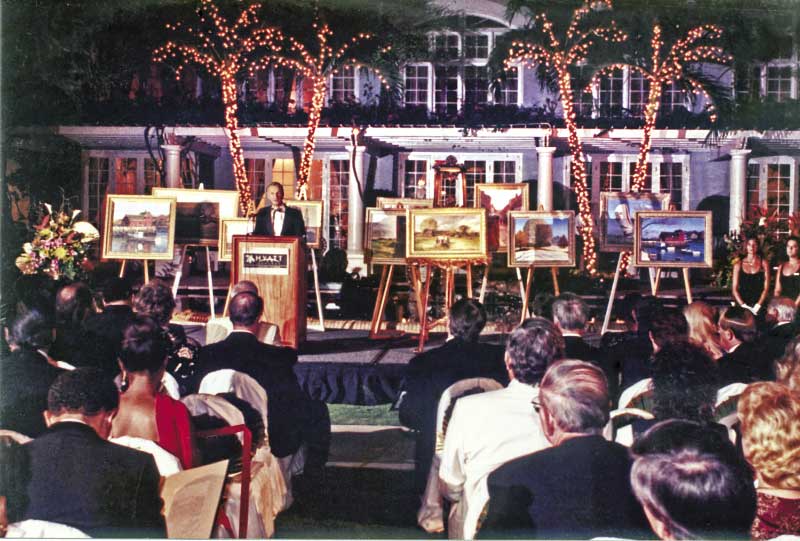
Simultaneously, Owen and Bigelman launched a full education campaign in local schools to promote the importance of arts education. A movement was born.
The gallery opened the doors of its first dedicated space in 1998 with a 1,200-square-foot facility donated by Caymanian entrepreneur Richard Christiansen. The organization’s first paid employees were Bigelman as director, Wray Banker as designer (graphics and exhibitions), Anne Goulden as administrative assistant and, a few months later, Paul Jordison, as education officer.
Today, Gallery Director Natalie Urquhart describes the founding director’s legacy as one of unbound energy and commitment; her time as leader from 1997 to 2004 would include some of the gallery’s most pivotal early moments.
“Leading an organization like the National Gallery is a 24/7 commitment. It’s a vocation,” said Urquhart. “Leslie embodied that and inspired those around her to share the same drive.”
Makin’ fun
The National Gallery’s first exhibition marked the opening of its Alexander Place location and was entitled “Junk Art,” featuring Maine-based artist Wally Warren and local participants who transformed recycled materials into works of art.
Soon afterwards artist, jeweler and “Native Son” Miguel Powery had a solo show inspired by the Islands’ maritime heritage. Wray Banker also had his first solo exhibition at this location. “Serious ‘Bout Makin Fun” used humor to comment on cultural identity and Caymanian heritage.
“The Body,” featuring sculpture by Caymanian Al Ebanks with drawings by English sculptor Henry Moore, was the last exhibit in that space before the gallery relocated to larger premises in Harbour Place on the waterfront, thanks to a donation of space from Board Chairman Andreas Ugland.
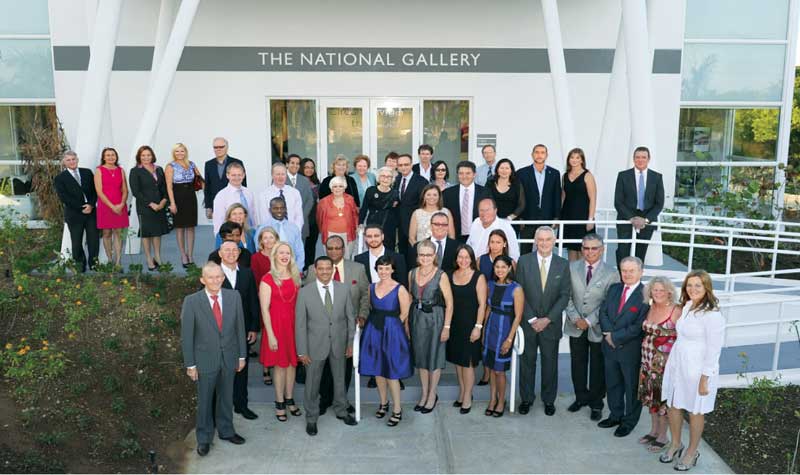
The capital project
In 1998, Owen, Bigelman and the gallery board started a campaign for a purpose-built gallery space and the “Capital Project” was born. That year philanthropist Helen Harquail donated four acres of real estate just off the Esterley Tibbetts Highway and a local architectural competition was held. Danny Owen was selected to conceive a multi-purpose, fully scalable art museum that could sustain the organization’s growth for generations to come.
The 14-year “Capital Campaign,” later chaired by board members Andreas Ugland, Henry Harford and Desmond Kinch in turn, as well as directors Nancy Barnard and Urquhart, ended with hundreds of private, individual, and corporate donors contributing a collective total of CI$2.8 million.
With the project now taking shape and a working group in place, the gallery continued to grow rapidly as Bigelman’s tenure activated a core group of local artists and patrons. The board and staff continued to raise funds for the gallery’s day-to-day functions, including educational and outreach programs.
In 2000, the “Friends of the Gallery” initiative was launched, bringing together a volunteer structure to help spearhead fundraising events which would eventually evolve into the gallery’s popular annual galas.
The first formal costumed fundraising gala was held at Pedro’s Castle in 2006, a Phantom of the Opera-themed ball that would help serve as the start of the phenomenon we now known as “gala season” in the Cayman Islands.
As the Cayman art scene expanded in scope, a need for structured programming and outreach became evident. By the millennium, the gallery team had built a loyal network of supporters, artists and advocates.
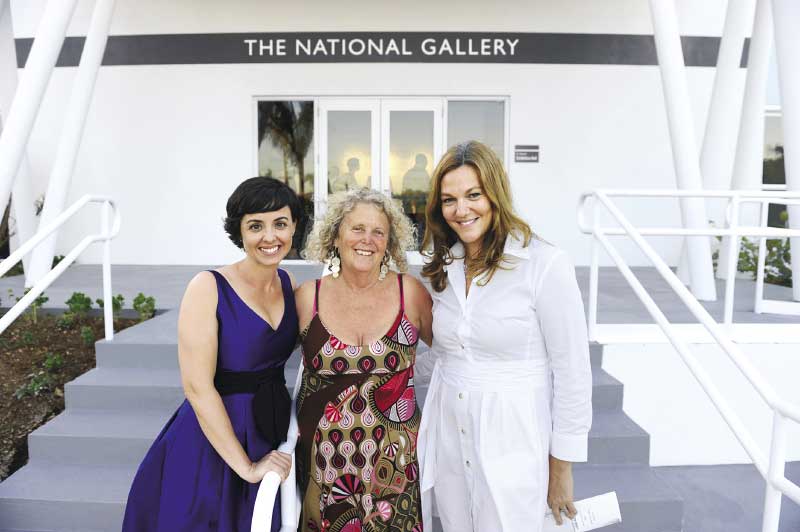
The peoples’ gallery
Nancy Barnard, who first joined the gallery as assistant director, became director in 2004 and took up her post with a distinct approach, one that focused on expanding education and art outreach.
Under her watchful eye, these programs – supported by corporate partnerships with companies such as Walkers, Deutsche Bank, Butterfield, State Street, and Dart – grew to include workshops and rehabilitation opportunities at HM Fairbanks and HM Northward prisons, Eagle House, Bonaventure Boys Home, Francis Bodden Girls Home, Caribbean Haven and others.
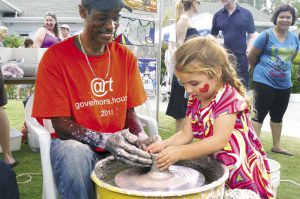 Developing those programs remain a highlight for Bernard. “My favorite memories are developing the gallery’s outreach programs – I loved to see how the visual arts peeled the pain away, if only for a little while,” she said.
Developing those programs remain a highlight for Bernard. “My favorite memories are developing the gallery’s outreach programs – I loved to see how the visual arts peeled the pain away, if only for a little while,” she said.
The gallery now runs an average of 25 art programs with more than 50 classes each month, including in the Sister Islands.
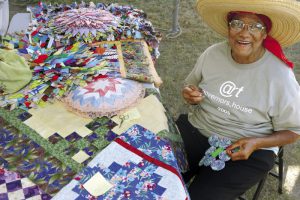
“Education lies at the very heart of our mission to promote, preserve and develop the arts of the Cayman Islands,” said long-time gallery supporter and chairperson Susan Olde.
The programs reach a broad cross-section of the community. “Our youngest students are 18-month-old toddlers on Friday mornings at our Walkers preschooler program and our oldest is a 102-year-old resident at The Pines who participates in our EY seniors’ classes,” said Urquhart. “We believe that you are never too young, or old, to enjoy a creative outlet.”
As the gallery expanded its community outreach, a diverse array of Caymanians emerged as the first generation of art school graduates. These influencers, who came of age under the tutelage of early artist/educators such as Ed Oliver, Maureen Andersen Berry, John Broad and Chris Mann, were establishing their own careers as working artists and teachers – including Urquhart.
In 2004, she assumed the gallery’s first formal curatorial position, refreshing its strategy to focus almost entirely on local group exhibitions that explored challenging social themes in Caymanian cultural identity, balancing these with popular retrospectives by well-known artists such as Janet Walker and Joanne Sibley.
Among the exhibitions was “Fahive,” a show by the Native Sons art collective, and “Emergence,” a poignant exhibit in 2005 which captured multimedia works made from the wreckage of Hurricane Ivan.
Sharpening focus
By the time Urquhart stepped into the role of gallery director in 2009, the world had entered a global recession. She previously spent several years in the gallery ranks in positions ranging from education officer and press officer to deputy director and curator.
With community engagement at an all-time high, Urquhart and the board made a bold move to reinvigorate the “Capital Project.”
With the building project now in full swing and sponsorship resources impacted in tandem with a recession, the fundraising committee incorporated non-traditional events in its schedule of annual fundraisers such as Board Member Ariane Dart’s popular Tea Party, The Big Art Auction in 2011 and the The Big Give, an advocacy and fundraising campaign where donations were matched by Gallery Chairman Henry Harford.
These initiatives, along with the annual costume gala, would be the last fundraising push before groundbreaking began for the gallery’s permanent building on the Esterley Tibbetts bypass in January 2011.
Reborn
The gallery unveiled its new building in January 2012, a year Urquhart describes as a “celebration.”
“It was remarkable to stand in the new site and welcome the literally hundreds of people that had contributed to the project over the years. This long, but immensely successful campaign, was truly a testament of the exceptional support from our community for the arts and a historic moment for the National Gallery,” she said.
At a reception at the gallery honoring individuals and businesses who donated to the building fund, supporter Andreas Ugland commented: “It was a natural progression. Everybody wanted to see it have its own home. I am so impressed with it.”
Duncan Taylor, governor at the time, attended the reception, hailing the new gallery as a vital institution for the country.
“Art helps build a strong society, a successful society. It enriches us and helps define us,” he said. “This building is a testimony to the importance of art to the Cayman Islands.”
After 14 years on the drawing board, Carol Owen remembers first setting sight on the new facility.
“I was so used to seeing it in drawings, I did a double take when I saw it for the first time,” she said. “It’s a landmark. It’s not like any other building. The reason this happened is because of people of talent and people of exceptional generosity.”
Twelve large-scale works by Caymanian-born artist Bendel Hydes, a founding member of the gallery, were featured in the opening exhibition “Circumventing the Globe.”
“Art, for me, is about creating pathways of knowledge, and to know each other better,” the New York resident told Grand Cayman magazine at the opening. “Cayman knows what institutions make us function better. A national gallery is necessary. The gallery hopefully is going to be a conduit for bringing people together.”
And, indeed, it has. Along with showcasing and promoting the visual arts, one of the gallery’s prime goals is to serve as a gathering space – bringing people together under the umbrella of the arts. Today, the gallery attracts an average of 18,000 visitors each year.
The 9,000-square-foot complex comprises two buildings that provide a series of flexible spaces to accommodate the vast array of the gallery’s exhibits, events and activities.
The ground floor of the main gallery houses temporary exhibits and the upper gallery is home to the national art collection. The second building, the Education Centre, houses the 50-seat Dart Auditorium that is available for films, lectures and private functions.
The Susan Olde Art Studio offers space for the gallery’s art classes, outreach and hands-on activities catering to all abilities and ages. The Maples Library is another resource, offering the largest fine arts collection on the island. Other amenities include a gallery gift shop and Art Café with an accompanying seating area in the PwC Pavilion.
Bridging the indoors with the out is a series of gardens designed by Sandy Urquhart in collaboration with Margaret Barwick, a noted artist, writer, horticulturalist and landscaper who volunteered her design expertise in the early planning stages. Urquhart has designed numerous public spaces in Cayman, including heading the design team for Camana Bay, the Caribbean’s single largest mixed-use development.
The gallery site incorporates smaller individual gardens, shaded areas, benches, a sculpture garden, and multi-purpose grassy areas for gatherings and special events.
Several gardens are named after benefactors, including the late Linton Tibbetts and his wife Polly; Andreas and Natalie Ugland; the Kinch family; and Timothy Ridley, Jane Wareham and family.
Dianne and Stewart Siebens made a significant contribution to the gallery grounds by building a labyrinth, a meditative path.
The Siebens funded the entire project, bringing down three expert labyrinth builders from the United States recommended by Robert Ferr, one of the world’s foremost labyrinth masters.
The pattern of the labyrinth is a re-creation and replica of the ancient labyrinth built in 1201 at Chartres Cathedral in France.
Expanding horizons
The national art collection features works by many of Cayman’s renowned artists such as Bendel Hydes, Gladwyn “Miss Lassie” Bush, Charles Long, Al Ebanks, Wray Banker, Miguel Powery, Randy Chollette, Janet Walker and Joanne Sibley, along with works by members of the art collective, Native Sons. Local crafts, such as thatch work, sculptures and installations, are also in the mix.
The works are loosely assembled by decade and, collectively, they tell the story of the Cayman Islands’ artistic and cultural history.
“A collection is central to a museum’s raison d’être, and it is only recently that we have been able to start actively collecting work so that we can tell the story of the Cayman Islands, through the eyes of our artists, to present and future generations,” Urquhart said.
“Our chairperson Susan Olde has really championed this project since taking the helm in 2016 by creating the Chairman’s Circle Initiative with a series of music and art fundraising events and supporting the NGCI Art Fund,” she said.
Today the collection holds more than 200 artworks. Key acquisitions include four Bendel Hydes works, two Gladwyn K. (“Miss Lassie”) Bush paintings, “Mitch Miller and His ‘Ting’” (1973) by Charles Long, “Poincianas at Government House” (1995) by Carol Owen, “Among Friends” (1999) by Al Ebanks and “Pathway” (1998) by Miguel Powery.
New frontiers
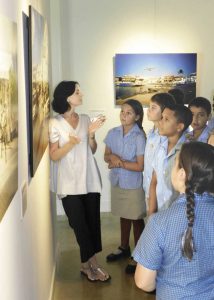
Urquhart is spearheading a move to network Caymanian arts and culture across the region and beyond.
“In the last couple of years, we have worked really hard at continuing to grow our local audiences while increasing regional visibility for Cayman Islands artists and ensuring we are part of the wider creative dialogue,” she said.
This year, the gallery will welcome a consortium of artists and curators for the third iteration of “Tilting Axis,” a two-day conference that brings together independent art organizations and museums operating across the Caribbean, U.S., E.U., and China.
Its 20-year milestone will also serve to put the gallery in the spotlight. Its series of celebrations began with the opening of an exhibition that celebrates Cayman’s maritime idenity, “Upon the Seas.” Running until April 20, the exhibit will involve several public and school events.
The gallery will be hosting community art showcases in each district, as well as exhibiting reproductions of some of the national collection’s most popular works in public areas around the island.
“A 20-year anniversary is a great time to think about growth and perpetuity,” said Urquhart. “As we strive to continue expanding opportunities for artists and students, we remain equally focused on preserving this place of national treasures for future generations.”
















